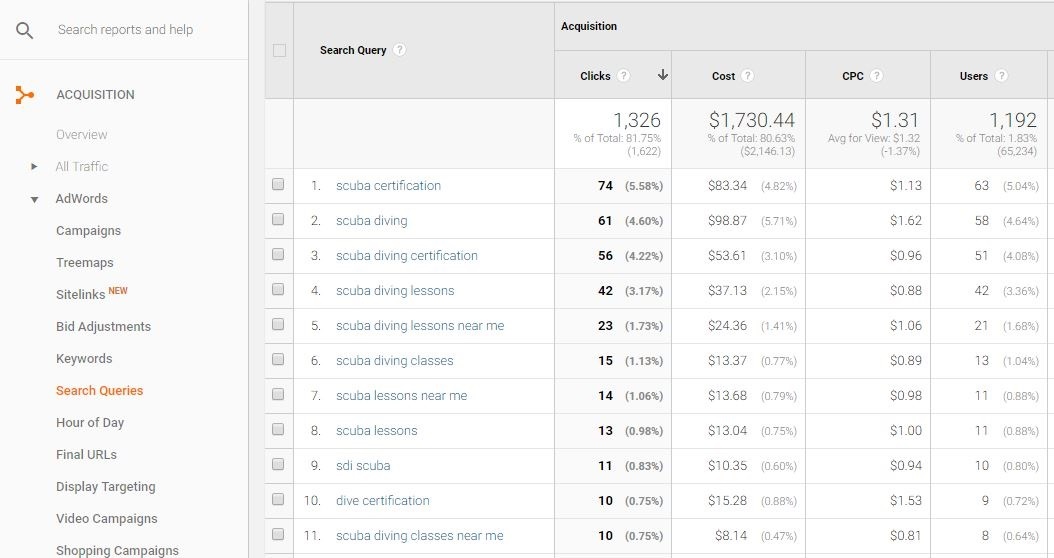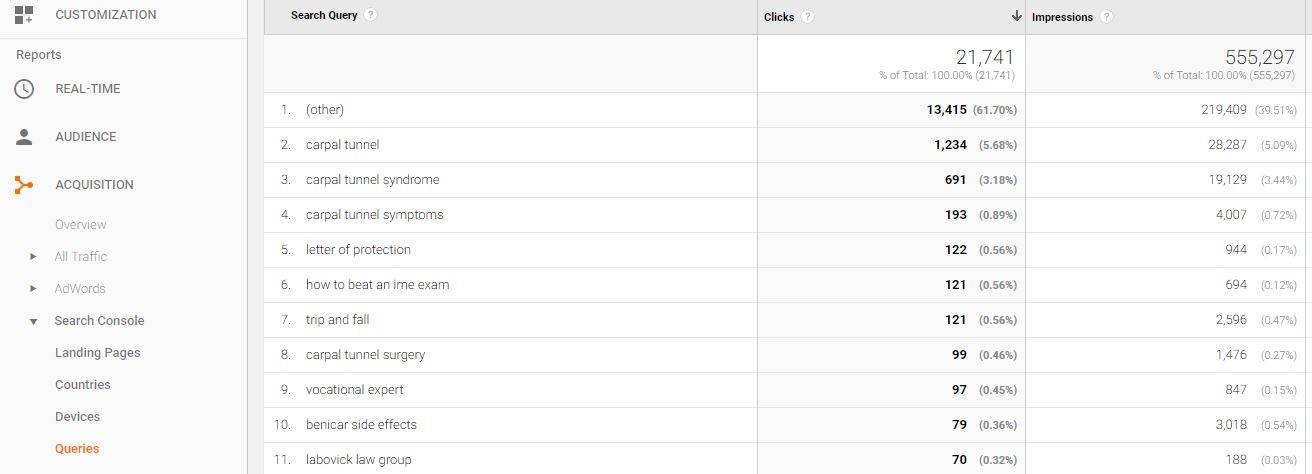One of the best things about digital marketing is that there’s always something new to test. Lately, our team has been sharing knowledge and looking for new ways to approach the market with social advertising tactics, and we’ve come across an exciting concept which we call “Search Intent Social Advertising”. When you combine the search intent-based data that’s available in Google Analytics with the granular targeting of social advertising, you have a campaign structure with a lot of potential.
In this post, I’ll break down exactly what Search Intent Social Advertising is, and how you can plan a campaign using it. Now, I am NOT a search engine optimization wiz, however, the logic of this process is undeniable. We have to stop marketing in silos, and use every piece of information we have available.
Researching Search Terms
First off, you’ll want to dig into your Google Analytics to find out which search terms people are using to discover content on your website.
The exciting part here is that you can see which terms are bringing people to your website, along with what people are searching for on your site itself. This may not be mind-blowing to search engine marketing pros, however, this information can be valuable when trying to decide on social advertising targeting and messaging.
There are two ways to dig into the search intent for your website:
- External Search Queries – These are the keywords or search queries which have led users to your website. If people are using these terms to discover your content, they are obviously interested in it or have an intent to do something with the content they discover. This is great information to use when selecting social ad targeting and creating ad content – in theory, you’ll be using the information usually found in a lower funnel action to inform action in the upper funnel. You can find this information by navigating to Google Analytics and choosing ‘Search Queries’ under the AdWords section in ‘Acquisition’.

- Internal Search Queries – These are terms that people are using to navigate around your website once they are actually on your site. This is valuable information for you, because it tells you in even more detail what people are looking for. In comparison, the External Search Queries tell you how they got to your website, while the Internal Search Queries tell you exactly what people are looking for within the contents of your site. This information can be found by visiting the ‘Queries’ section under Search Console in the ‘Acquisition’ section in Google Analytics.

Using Search Intent to Fuel Social Advertising
After you’ve done your research, now it’s time to tactically execute on your discovery. Once you figure out how people are finding your site via Google, and what they’re looking for on your site through your internal search, it’s time to tailor your social targeting and creative to match for contextual relevancy.
- Social Targeting – While the search queries might not match up exactly, you can likely get close. If a lot of users are searching for “scuba diving lessons” and being led to your website, you might want to target people through interest and behavior data based on scuba diving, adventure travel, snorkeling and other boating activities. Typically speaking, a lot of the social advertising targeting parameters align with the search queries people are using.
- Social Creative – You might notice that there are a lot of searches that include the words “near me” – people are using this to discover brands and services close to their locations. If you notice this search intent trend, you might want to consider adding local messaging and visuals to your social ads. Context goes a long way.
One Small Caveat
Using search intent to inform social advertising is an exciting tactic, however, there is one caveat of which to be aware. We are dealing with two different ways of approaching the market – with search engine marketing, you’re trying to provide consumers with exactly what they are looking for in an easy way. With social advertising, you’re trying to get your message in front of consumers based on what they’re likely interested in.
The catch is that consumers may not be in the headspace to convert while hanging out on social media – when searching for something on Google, users are actively seeking that information out, while on social, users are passively browsing potentially unrelated content. It’s important to know the difference.
When search intent and social advertising come together, you can create contextually relevant advertising, that will make an impact for your brand.